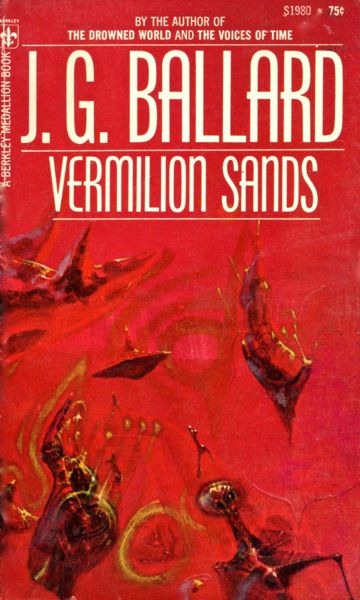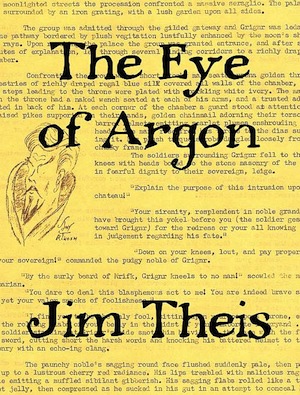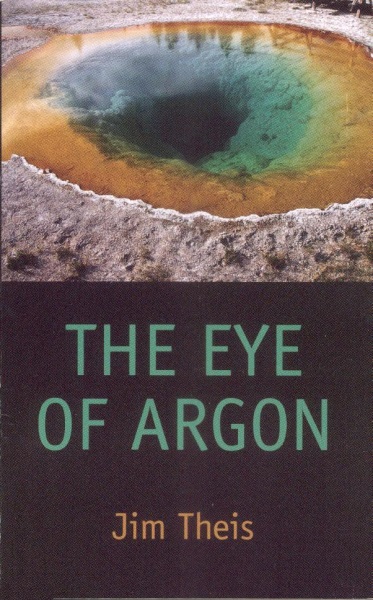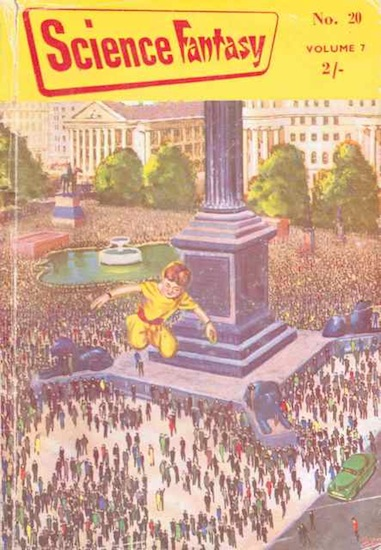“If I feel physically as if the top of my head were taken off, I know that is poetry.”
-- Emily Dickinson
The title may be a simple question, but it leaves so many answers. But the simplest may be one that requires two halves of a coin to complete: the artist's work and its observer. The work brings something part way that the observers [reader, listener, and the patient watcher] takes into themselves, completes and transforms.
Another answer is that it wrestles with humanity. Who are we? Why are we? To what extent are we us and they them (be they animals, or people of different cultures, religions, philosophies)? What role do genetics, behavior, and hormones play in making us who we are? These are questions of science, psychology, and sociology, but albeit not obviously since, adding these does not necessarily improve an art. It adds depth and breadth to a work to explore. Yet no one has perused a scientific journal, read an article (as opposed to creative nonfiction) and proclaimed it art. Somebody may have, but they're unlikely to be serious.
The reason we love aliens is the same reason we love other cultures: the inherent challenge to our own belief system. We either build a new castle according to, or incorporating some of the new ideas into the design, or we modify our own design based on the enemy's tactics. In terms of structure, it's a win-win. It's all theoretical. You don't have to have your castle attacked (or have Emily Dickinson's head taken off) to redesign your castle.
The implication here is one of challenge, whatever one's personal ideology--left, right, or center. Each has something that can help you redesign your castle to make it stronger. To exclude any group is to produce what is called in biology a "bottleneck," which can lead to the extinction of a species--intellectually and spiritually if not in fact. Or maybe it would lead to extinction.
Consider, too, that despite pressures to a species--sometimes predominantly from the left, sometimes from the right--that the numbers of each group remain the same. This suggests that there is a genetic component to people's beliefs.
This also suggests that we have evolved these different philosophies to ensure our species' survival. And it further explains our love for the foreigner and their strange new philosophies.
Perhaps talk of evolution is disturbing for some. Let's view it from a historical figure: Socrates, the man who questioned every prevailing doctrine until they felt like fools. Of course, they put him to death for this, but the man walking out of a discussion with Socrates must have felt like Dickinson described above--similarly transformed.
Another historical figure had a similar modus operandi and they also put him to death for challenging authority. His art wasn't to tear down Rome ("render unto Caesar") or demolish Judeaism ("I am not come to destroy, but to fulfill."), but an interior revolution within every heart. His modus operandi confuses people to this day. People will quote him out of context or put words in his mouth, but only paradox that convicts all will do. If a body thinks Jesus was only out to get the body's favorite baddies, then they have another think coming.
Jesus used the arts--paradox and parable--to convey his ideas, to the perplexity of even his own disciples. Why? He supplies a reason, but also art that unravels inside you has a better chance of persisting, transforming. Human intelligence grows with challenge--no matter what the age. If an older adult does things that makes them learn new things, they are more likely to maintain their intelligence than those who do not.
Use it or lose it. What goes for brains, goes for brawn and bone. If you don't exercise, the body will break it down and shovel it out of the body's house. It is all to our advantage to challenge ourselves.
Therefore, limiting our art to one philosophy that supports any one group does humanity as a whole a disservice, not to mention art itself. It suggests a failure of imagination and intellect.
#
Isn't it okay not to be challenged? Sure. I have an example below that some may never desire to experience. But as we suppress, especially in any one direction, the power of art diminishes.
Let me challenge myself to make the point stronger and more nuanced.
An author perennially challenges Mary Oliver as too inferior a poet to read. Let's examine a poem of hers to see if it is: "Messenger" (see link for the complete poem).
"My work is loving the world."
This is a challenge to the idea that art must challenge.
"Am I no longer young, and still not half-perfect? Let me
Keep my mind on what matters...Which is my work,
Which is mostly standing still and learning to be astonished."
Again a challenge for those who insist on challenge, but also it suggests that we need to be astonished at the world around us leading us to enjoying life by...
"mostly rejoicing, since all the ingredients are here,
Which is gratitude, to be given a mind and a heart
And these body-clothes,"
It's not even this world that matters since the body is but clothes.
"Telling [the clams] all, over and over, how it is
That we live forever."
These small acts of noticing the world somehow lend us a kind of immortality. But really, noticing the details in the hustle and bustle of life is part of what makes us appreciate both life and art.
We can take the art in, we mull it over, and we can accept or reject it, but it is the act of mulling that makes it art. One does not have to accept an artist's beliefs, but this act of taking in the challenge (accepting and rejecting, partially or fully) demarcates the territory of art. Readers or observers get to choose what they do with it.
If art never or rarely challenges one's beliefs, then they are probably only reading the work of propagandists. Of course, one is welcome to such pursuits, but such a one should not engage in the disingenuous discussion of art and aesthetics. An honest self-label might be: "Flunky to the Chief Propagandist of the Blindered Party."
#
One might ask, "Can't we just observe life, nature, and humanity?" That's implied above. It may be all that one aims for--a critical part of art. But the best art--or at least my favorite--is something that sits inside and I have to do something with it. But yes, observation is a necessary element.
One might ask, "Can't we just enjoy art?" Of course. In fact, bestsellers and blockbusters may lack some qualities but have something in trump cards over their artsier opponents. If you can write something that forces readers or viewers to desire the art again and again, even if it's missing other qualities of art--that itself is craft raised to an art.
This definition isn't intended to be all-encompassing but expanding the possibilities, opening the mind. There are many other elements to consider to discuss art, and this is but the rocket launch.
#
This brings me to a debate writers were engaged in not long ago: actors rewriting dialogue to keep the story from getting uncomfortable. Now if they are following the characters to arrive at this conclusion, that's art. Making the narrative uncomfortable in order to challenge people doesn't necessarily make art art. Following the characters would show that the actors were trying to get at what makes these humans what they are.
But if they are bucking character and honesty and history and science to make viewers politically or socially comfortable then it may still have some art, but at a lowered level. It is not unlike a Hallmark show, which may have elements of art, but it is not meant to challenge but to comfort. There's nothing wrong with Hallmark movies, but few seem to be interested in art but in making movies that people (though they love it) dispose of once viewed.
The debate brought up the term "present-ism" or presentism [dash provided to clarify word composition]:
"introduction of present-day ideas and perspectives into depictions or interpretations of the past.... a form of cultural bias [that] creates a distorted understanding of their subject matter." --Wikipedia
This term has been around since the 1870s although it has probably always been a problem. It may be impossible for a historical work not to be affected by presentism. However, consciously bucking history is, at best, alternate history, if intended.
But if art is not their aim but comfort or propaganda, then let it be labeled for what it is. They can name the channel "Propaganda Reruns." Not everything needs to be high art.
#
When I say "propaganda," I don't mean any work with a political aim. Good art can be political--whatever one's life philosophy. Perhaps the best kind of political art challenges everyone as the historical personages above did.
But if the enemies are strawmen and/or everything in the venue has the same political slant or the politics, then it's probably propaganda--whose aim is to persuade of one's political philosophy at the expense of the rest of the population certain belief systems.
That's okay. Label it for what it is. But there's nothing inherently wrong with any political aim. Feigning objectivity would, however, be problematic for something whose true aim is the political over aesthetics.
When critics state something is good because it reflects some particular political ideology they'd like to be reality, it doesn't mean their judgment on this particular work is wrong, but it may show them incapable on rendering judgment on things they disagree with. Perhaps as a bigot, their whole system of aesthetics may be suspect, but perhaps not. Perhaps they are just admitting to their own bias, which would be honest. It does call into question whether they should be an art critic or maybe just a critic of arts attempting to mimick their political goals. Such bigots serve a public function of protecting their people behind a tall fence--or at least fingering what they consider dangerous, warning about those art works that stray from the fold. The Christian critic or the Muslim or the Atheist or the Capitalist or the Communist or Socialist critics [etc.] can point out roving dogs outside the fence perimeter.
More adventuresome readers are willing to brave those dogs, to learn, to meet the other, to visit art in its other forms.
#
This film was a challenge--Lords of Chaos, based on a book of nonfiction--which includes suicide, murder, pyromania, sex, sexual taunts, threats. It is definitely not designed to make you comfortable. Few, I suspect, will admire the characters, but some might, a fear which might make some want to ban it. If you can get around it--something few may be able to do (I could only watch a few minutes at a time)--it is actually thought-provoking.
A group of young men create a musical subgenre of metal that is as much about their public behavior/persona as their music. Like their band name, they try to create mayhem by burning churches and killing. There's a moment when a character tries to explain his Nazi flag:
--And why do you do this? Is it a protest against society or...
--Bring us back to our origins.
--Our origins?
--Odin.
--So you believe in paganism, and you're a Satanist, and you're also a Nazi. That's a pretty broad belief system.
--Well, you know, these things are all connected. That may be hard for a journalist and normal people to comprehend.
--Yeah. Yes, it is.
Is it art? Yes. It captures a segment of society that most of us don't get. It shows the line between the posers and the doers. Consider the narrator and how he emerges changed or unchanged. There's a beautiful last line that works in multiple ways.
Now some question the accuracy of this book and the movie, which could be a problem, depending on what's misrepresented. If we didn't follow the characters, then it may be a problem. They do follow the characters presented well, if not the real ones. Perhaps it works best as fictionalized nonfiction. It seems to be a serious attempt to capture the moment, and the last line suggests this as well.
Would I recommend it? To very few. Most will hate it, not having the stomach for it.
Would I watch it again? Probably not.
Was it worth watching? Yes.
Note: I am diametrically opposed to everything these young men said and did, yet I gained insight into how they think. Now I have come to grips with a dark mystery of human behavior--a map is drawn, the head is opened. This is why we have freedom of speech, why we listen to multiple voices.
Perhaps this opens Pandora's box, but with an objective observer, we gain a broader understanding of what it means to be human.


.jpg)




![Best Game Ever: A Virtuella Novel by [R R Angell]](https://m.media-amazon.com/images/I/51+szU3dpTL._SY346_.jpg)










